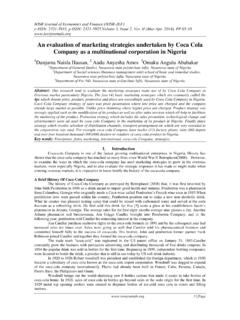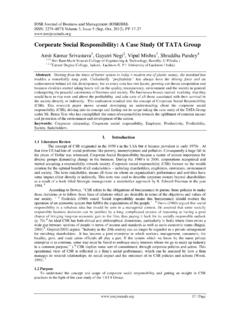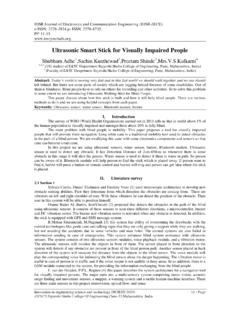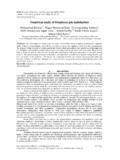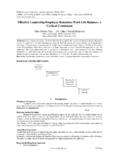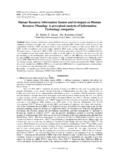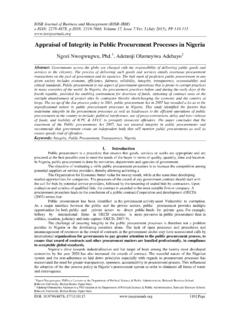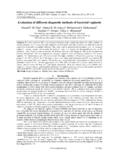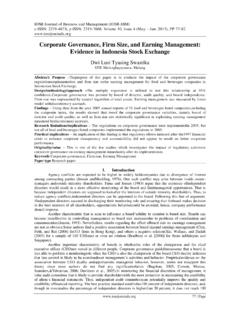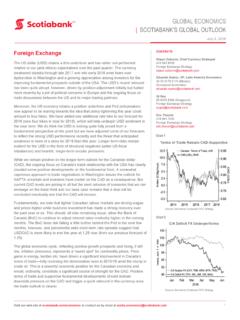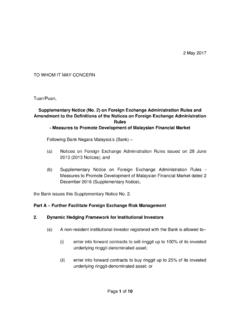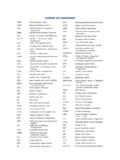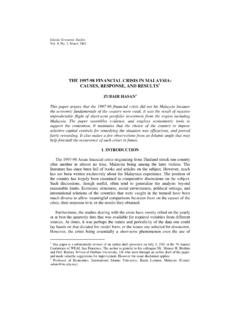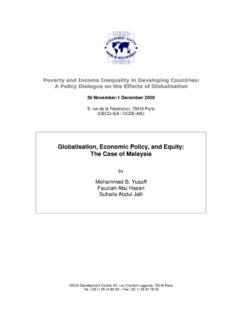Transcription of The Effect of Marketing Mix and Customer …
1 IOSR Journal of Business and Management (IOSRJBM) ISSN: 2278-487X Volume 4, Issue 2 (Sep,-Oct. 2012), PP 01-11 1 | P a g e The Effect of Marketing Mix and Customer Perception on brand Loyalty 1 Anantha Raj A. Arokiasamy 1 Quest International University Perak (QIUP) Faculty of Business, Management and Social Sciences (FBMSS) No. 227, Plaza Teh Teng Seng (Level 2), Jalan Raja Permaisuri Bainun, 30250 Ipoh, Perak, Malaysia. Abstract: The Malaysian hypermarkets have steadily increased over the past decades with brand loyalty emerging as a frontrunner in the retail industry. There have been copious studies related to the effects of Marketing mix towards brand equity instead of brand loyalty.
2 It is the intention of the researcher to identify the effects of Marketing mix on brand loyalty in the Malaysian hypermarkets sector. The researcher will adopt the study conducted by [37] in relation to its five independent variables (5 IVs) which are price, store image, advertising spending, distribution intensity and price promotion as examining the relationship between 5 IVs and Malaysian hypermarkets brand loyalty. A total of 300 questionnaire surveys have been distributed to customers at 3 hypermarkets around Klang Valley in Malaysia. Lastly, the researcher uses a descriptive and explanatory study by means of descriptive and inferential analysis. In conclusion, price, store image, distribution intensity and price promotion are found to exert a significant positive influence towards Malaysian hypermarkets brand loyalty.
3 Keywords: Marketing Mix, Malaysian Hypermarkets, brand Loyalty. I. Introduction The Malaysian retail industry has grown exponentially over the past decades. [1] Indicated that the major source of competitive advantage for retailers is on enhancing and retaining Customer loyalty. Strategies adopted to recognize Customer loyalty in the multifaceted and complex nature of Customer choices and preference by focusing on the role of Customer s decision-making [2]. [3] Highlighted that price, store image, distribution intensity, advertising spending and price promotion (the 5 IVs) in the retail industry would to a great degree influence customers decision-making and in turn brand loyalty. A total of 3 hypermarkets were chosen in the study around Klang Valley regardless of foreign owned or local hypermarkets.
4 They are Carrefour, Tesco and Giant who have a large Customer base in Malaysia. For this study, customers are defined as the people who are willing to purchase grocery in hypermarkets. In the year 2010, Malaysia s population peaked to around 28 million indicating a nation gearing towards developed status among the Southeast Asia countries [4]. A report by the Malaysia Exporter Guide Annual, 2010 specified that around 45 percent to 60 percent of household customers preferred to shop at hypermarkets raising awareness of brand consciousness and demand in quality of products purchased hence the increase in hypermarkets in Malaysia. This study aims to investigate and focus on the 5 IVs in Marketing mix that can influence Customer s choices [5].
5 Furthermore, hypermarkets mainly differentiates themselves with pricing policy, level of service offered, product assortment and Customer demographic profiling to woo in the customers. With the increased rivalry in the retail industry, Malaysian hypermarkets management is looking earnestly at ways to improve Customer loyalty and how it affects the Marketing mix. Over the years, a lot of research has gone into testing the correlation between the Marketing mix and brand loyalty. Although brand loyalty is one of the important components of brand loyalty s dimensions, clearly there is lacking of evidence to prove the Effect of Marketing mix to brand loyalty directly. Studies by [3], [6] and [7] assessed on the facade of brand loyalty rather than investigating profoundly on brand loyalty.
6 There is no clear distinction of which Marketing mix s element that significantly influences the brand loyalty of hypermarkets in Malaysia. Thus the Malaysian hypermarkets are unable to implement a robust Marketing strategy that will ensure brand loyalty among customers in the retail industry. II. Literature Review brand Loyalty [8] developed a conceptual framework of brand loyalty that revealed the overall range of brand loyalty is based on a hierarchal Effect model with respect to affective, behavioral intention, cognitive and action dimensions. In 1999, [8] gave a definition to brand loyalty as a deeply held assurance to rebuy or repatronize a favoured product or service habitually in the future, thereby causing repetitive same- brand purchasing, despite situational influences and Marketing efforts lured at customers to switch buying behavior.
7 His connotation The Effect of Marketing Mix and Customer Perception on brand Loyalty 2 | P a g e revealed the changes in strategies adopted by customers in purchasing decision while Customer loyalty still remains firm and repeat buying in the future. brand loyalty is considered to be an asset, which is a part of the concept brand equity. The major asset categories of brand equity are brand name awareness, brand loyalty, perceived quality and brand associations. All these asset categories add value to the product. brand awareness refers to the strength of a brand s presence in the consumer s mind and is measured according to the different ways in which consumers remember a brand [9].
8 [10] definition emphasizes somewhat different aspects in defining loyalty as the willingness of someone to make a personal sacrifice or other investment for the strengthening of a relationship. One of the newest definitions of brand loyalty comes from [11] who describes it as theory and guidance leadership and positive behavior including, repurchase, support and offer to purchase which may control a new potential Customer . Furthermore, the American Marketing Association defines brand loyalty as the situation in which a consumer generally buys the same manufacturer originated product or service repeatedly over time rather than buying from multiple suppliers within the category or the degree to which a consumer consistently purchases the same brand within a product class [12].
9 The longevity of a Customer s relationship influences a company s profitability in a positive way [13]. Because of this, general business wisdom suggests that a company should focus some proportion of its Marketing efforts on the development, maintenance or enhancement of Customer loyalty [14]. According to former studies, it can cost as much as 6 times more to win a new Customer than it does to keep an existing one [15], so increasing retention can help reduce acquisition costs. Depending on the particular industry, it is possible to increase profit by up to 60 percent after reducing potential migration by 5 percent [10]. Thus, it s easy to see that the increase and retention of loyal customers has become a key factor for long-term success of the companies.
10 The costs of attracting and establishing current customers have already been realized and because of their experience they can be served more efficiently [13]. Price [6] examined two competing manufacturers' pricing policies as a function of brand loyalty. They define a stronger and a weaker brand in terms of strength of brand loyalty and examine how the degree of brand loyalty determines the optimal frequency and depth of price promotions. Their analysis indicates that the weaker brand promotes more often than the stronger brand (this is shown to hold empirically as well) and offers smaller price discount when it is sufficiently weaker, but offers greater discount when it is only moderately weaker, than the stronger brand .
